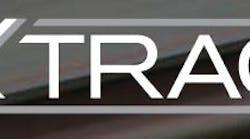Chicago-based NxGen Rail Services is pleased to announce the release of the world’s first high-speed rail inspection system capable of detecting missing and displaced rail anchors.
“At NxGen we are responsive to customer’s needs,” said Robert Grant, NxGen managing director. “We are excited to provide the industry with the first, high-speed solution for inspecting rail anchors as a part of our NxTrack inspection system.”
With millions of anchors currently installed in rail lines across North America, high-speed inspection with the NxTrack software is a boon for keeping the rail lines safe. Until recently, the most common way to inspect rail anchors was to walk the track or manually inspect them from slow speed road rail vehicles. The new software module within the NxTrack inspection system can automatically scan for clusters of missing anchors at 70 mph aboard the CRDX391 inspection car. It also provides detailed reports of any defects.
Anchors maintain the integrity of the rail by keeping it immobile despite changes in weather, environmental factors, etc. that can cause changes in the rail. If anchors are missing or out of position against the rail, it can expand and contract freely, and possibly create a danger of buckling or breaking, which are significant causes of derailments.
The NxTrack CRDX391 currently houses the anchor inspection software module, but NxGen plans to include it in all new inspection cars as well.
NxTrack was released last year as the first fully integrated, high-speed, track inspection system to integrate optical, geometry and ground penetrating radar (GPR) technologies to collect data along the line at high speed. The system provides maintenance planners with a holistic view of their asset in near real time. The on-board software employs machine intelligence to analyze data and more accurately plan maintenance. All data is analyzed using Federal Railroad Authority or client- based rules.



